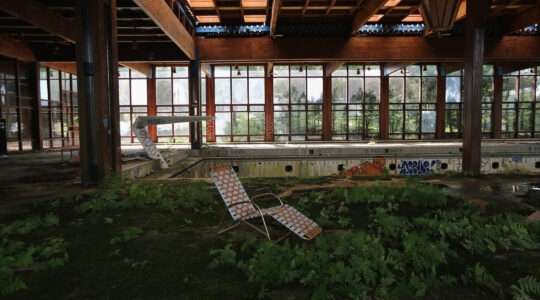For over 250 years, Shearith Israel, America’s first Jewish congregation, has actively ensured that Newport’s Touro Synagogue — including the precious Myer Myers Torah finials (rimonim) used there — remains vital, vibrant and intact. Congregation Jeshuat Israel (CJI), the current, temporal caretaker of the legacy of American Jewry in Newport, can’t justify its attempt to sever the sacred rimonim from their historical, ritual context in Touro Synagogue by selling them.
Since the 1650s and 1760s respectively, the Jewish communities of both New York and Newport have used rimonim to adorn their sacred Torah scrolls. Both communities understood that, according to the very religious law for which these Jews were willing to sacrifice, once these bells were placed on the Torah, they became and would remain a sacred extension of the scroll they adorned. Selling the rimonim would profane the sanctity of these ritual objects, unless the object purchased was a Torah scroll itself or unless the funds were used to ransom and thereby save a human life.
To some, such fealty to religious “technicalities” may seem antiquated — after all, why should one ritual law outweigh the demands of a budgetary bottom line? In the case of the Touro Synagogue, that hard trade-off isn’t required. CJI operates Touro Synagogue at a profit (other than for significant amounts it paid its lawyers to sue Shearith Israel). When Touro Synagogue needed repair, sufficient funds were raised by the independent, national Touro Synagogue Foundation. CJI has access to federal and state grants. The Visitor’s Center adjacent to the Synagogue provides CJI with steady annual income. “We need money” is not an excuse here, even were it a legitimate argument in theory.
Shearith Israel had been a ritual caretaker of Touro Synagogue and the rimonim for nearly 140 years before CJI came into existence. Shearith Israel financially assisted in building Touro Synagogue — the second round of financial support from Shearith Israel (in 1762) is what permitted the building to be finished. In the first part of the 18th century, when the Newport Jewish community became extinct, its remaining members turned to Shearith Israel to safeguard their legacy. As CJI’s own website admits, it was then that “[l]egal oversight of the [Touro Synagogue], its contents, and its deed was handed to Congregation Shearith Israel in New York.” Every formal agreement, lease, board resolution, organizing constitution, and contract, including with the federal government in the mid-20th century, identifies Shearith Israel as the ritual overseer of the synagogue and its ritual objects. Shearith Israel has exercised that oversight over the course of American Jewish history precisely to protect the integrity of Touro and its ritual objects, another living symbol of the history of Jews in America.
Touro Synagogue and the Myer Myers rimonim are neither “local” to Newport nor separable from each other. At Shearith Israel’s inspiration decades ago, Touro Synagogue was designated a national historic site. The Department of Interior explanatory brochure on the Synagogue as well as the National Register of Historic Places make specific reference to Myer Myers (the first Jewish member of the previously exclusionary Silversmith’s Guild) and to his “exquisite silver belltops,” noting that the rimonim “give to the synagogue a profoundly religious atmosphere.” These Torah finials are resonant symbols of American Jewish continuity, the beauty of religious tolerance, and our sacred heritage. They are a powerful legacy for every American Jew and every American.
There are already too many Jewish ritual objects in museums, the product of pogroms and persecutions. Too many of our ancestors hid or smuggled ritual objects, at great personal risk and sacrifice, to avoid abandonment, defilement, misuse. Jews, that wandering people, have precious few manifestations of continuity of use. The Myer Myers rimonim are part and parcel of Touro Synagogue and stand as palpable monuments to Jewish continuity, participation, and success in the New World. The current generation of Touro Synagogue caretakers have no right to break the chain of continuity by moving these living examples of worship to a museum.
When Shearith Israel learned in 2012 that CJI was secretly trying to sell the Myer Myers rimonim, Shearith Israel pleaded with CJI to have the matter quietly adjudicated in a beit din, or Jewish court. CJI refused, and the case continues in the federal appellate court. CJI claims that Shearith Israel wants to interfere with Jewish worship at Touro Synagogue. The assertion has no merit; Shearith Israel has protected worship at Touro Synagogue for 250 years. Shearith Israel has offered financial assistance to CJI and is certain that, if other synagogues can overcome budgetary constraints, then a national treasure such as Touro Synagogue can do so without violating Jewish law and without forever parting with a patrimony belonging to all Jews.
Louis M. Solomon is president of Congregation Shearith Israel in Manhattan.
The New York Jewish Week brings you the stories behind the headlines, keeping you connected to Jewish life in New York. Help sustain the reporting you trust by donating today.




